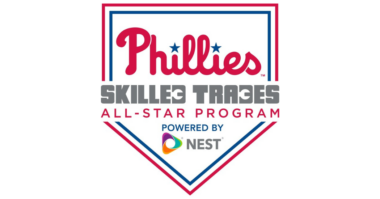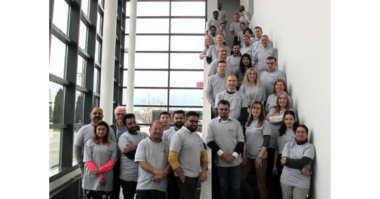Most people struggle with having difficult conversations, especially about recent events and/or issues around inclusion and equity. These topics can evoke strong conflicting emotions, opinions and cause issues among coworkers. At the end of the day, creating a safe and inclusive work environment starts with you. Yes, you – reading this article. Many people and maybe even you want to talk about issues around inclusion and equity, but maybe a bit scared you will say something offensive, insensitive or hurtful while expressing your point of view. If that’s you, let me help you feel better. There is a 99% chance that this going to happen and accepting it and taking ownership over what we do and say with the commitment to improve is the only way to move past that fear. Hopefully, the information provided below will assist you with this!
A lot of conversational roadblocks can be tackled by establishing ground rules. Catalyst, a 50-year-old global nonprofit working with some of the world’s most powerful CEOs and leading companies to build workplaces that work for women, has an easy to follow guide to assist with establishing conversation ground rules:
1. Assume Positive Intent: Don’t assume people aren’t doing a good job. If someone is struggling, ask if you can help and see if you can understand why and how they are struggling. For example, if someone is always late to work. Don’t assume it’s because they don’t care or are lazy because they may have a good reason for being late. This video entitled “I’m Sorry” provides an example by showing an experience between a teacher and a student who is always late – where the teacher makes an assumption about why the student is late and slaps the child on the hand with a ruler every morning. One day, the teacher learns why the student is late and completely changes how to approach that student in the morning. The teacher made a judgment without understanding the situation. We have all done this – made an assumption or a judgement without knowing the story – the goal is to do less of it.
I will say, in my opinion, positive intent really only gets you so far and isn’t always valid. Using “positive intent” as a blanket to ignore patterns in folks that need to be addressed can be problematic. Giving someone the benefit of the doubt once in a while is fine. Assuming someone isn’t trying do a bad job is generally always a good thing. Leaving judgement out of situations to try to understand what is going on is key.
2. Have Dialogue: If you are focused on leading inclusively and increasing diversity within your organization focusing on having dialogue (vs debate) is a great start. Being able to share different perspectives and being open to being challenged. It’s not about agreeing, it’s about understanding other’s point of views and being open to insight on how others may experience situations.
3. Be Accountable: Determining and sharing a bias you have and how you are working towards being better is great. For me, I have a bias towards people based on where they live in the USA (largely due to traveling a lot for work and having to work throughout the USA). I know it, I call myself out on it, and I have others that do as well when they feel that bias is being used in my decision making. I accept their feedback and commit to doing better. It allows me to pause and self-reflect on the interaction, make improvements and then try to be a role model for others to do the same.
4. Be Open: Accept that you will make mistakes. It’s part of life and there will be times that you will unintentionally offend others. But how you accept correction is in your control. Avoid being defensive or invalidating the other person’s experience. For example, if you call someone ‘sweetheart’ or ‘darling’ at work and that person doesn’t find that to be a compliment or it makes them uncomfortable – we need to taking ownership that we caused harm, apologize and explain it wasn’t intentional, own it, and commit to doing better. This approach will always assist with not only showing that person respect but will allow you to work with that person effectively going forward. Sharing is caring. That person shared with you something they don’t like and thus cared enough about you to tell you. If the person is still upset – understand they are triggered and it may take time.
5. Actively Listen: Try not to listen just to respond. Listen to understand. I struggle with this one a lot. Sometimes we are short on time, have other things we need to do, but actively listening to someone’s concerns and ideas can create new and better ways of working and creating together.
6. Normalize Slight Discomfort: Embrace being uncomfortable because working through it creates growth. Use experiences in your life when you were uncomfortable with others and how that benefited you. For me, I transitioned into a new role about 8 years ago in water and wastewater operations with limited applied experience and by asking for help, being teachable, and supporting others I was able to grow into the professional I am today with the skill set I have. Frankly, a lot of the times I felt like a poser but really, I was growing because of that discomfort.
7. Encourage Speaking Up: If you witness a bias, speak up. Talk about differences. Differences don’t divide us – but how we talk about them can. Expressing appreciation towards differences such as “I really appreciate your background as a teacher and how you can take complex ideas and create simple graphics. That skill set is super valuable in the engineering and STEM world”. A statement like this can really help support someone who perhaps went back to college to work in STEM and spent time teaching 1 st graders. Showing how a different background feeds into an overall goal into work, shows others how to appreciate differences vs. devalue differences or have the mindset that one type of skill set is more important than another type of skill set.
If you are a supervisor or a team member, if you display these kinds of behaviors, others you influence will as well, making space for others to express different viewpoints without fear of rejection. Sharing the mistakes that you have made at work and how that improved your performance allows other to feel safe to come to the group when they have a problem.
Sometimes as part of the journey towards being more inclusive, we have to understand that for some folks, it’s a large ask to look outside of themselves to support a common goal or need. If you are a manager or lead a team of people, to help get people on board you can frame it as “I want my team to work together, produce quality work and not be hindered by things “I” do and say and prevent roadblocks in communication.” Allow yourself to be open to having others call you out when you do or say things that prevent you from maintaining an emotionally safe workplace. Some of the professionals I work with that really care about me – they provide me feedback to be better. It’s a gift. People who either correct us or tell us improvement areas care about us and the connection we have with them.
If you are looking to expand your knowledge base around inclusion and other diversity related issues Catalyst has many resources, microlearnings, and free infographics such as Conversations Roadblocks and How to Surmount Them to provide assistance. In order to work in a more inclusive environment, it starts with you leading within your organization with a “Strong back and a soft front”. If you aren’t sure if you have any bias, the Harvard Implicit Association Test (IAT) can help indicate if you do have a bias and you can retake them to see if your bias shifts or changes over time.
Feeling overwhelmed by DEI related efforts? When in doubt, reach out and use organizations to help – whether it be to help how your workplace can do better (such as hiring, retention, inclusive culture), determine strengths or coming up with ideas on how to be more inclusive at work. Remember, it’s a journey – with stops along the way but there are groups to help. Organizations like Catalyst have various programs that focus on leading inclusively as well as their Men Advocating for Real Change (MARC) as part of their allyship programming to assist towards gender equity at work, including for gender expansive folks.
Additionally, if your organization is looking for ways to expose folks to different experiences, consider contacting the Association of Minority Speakers (NAMS). NAMS is an organization comprised of a diverse group of speakers and advisors for company leadership to help with perspective sharing and increasing empathy within your organization.
*Photo by Clay Banks on Unsplash





Comments